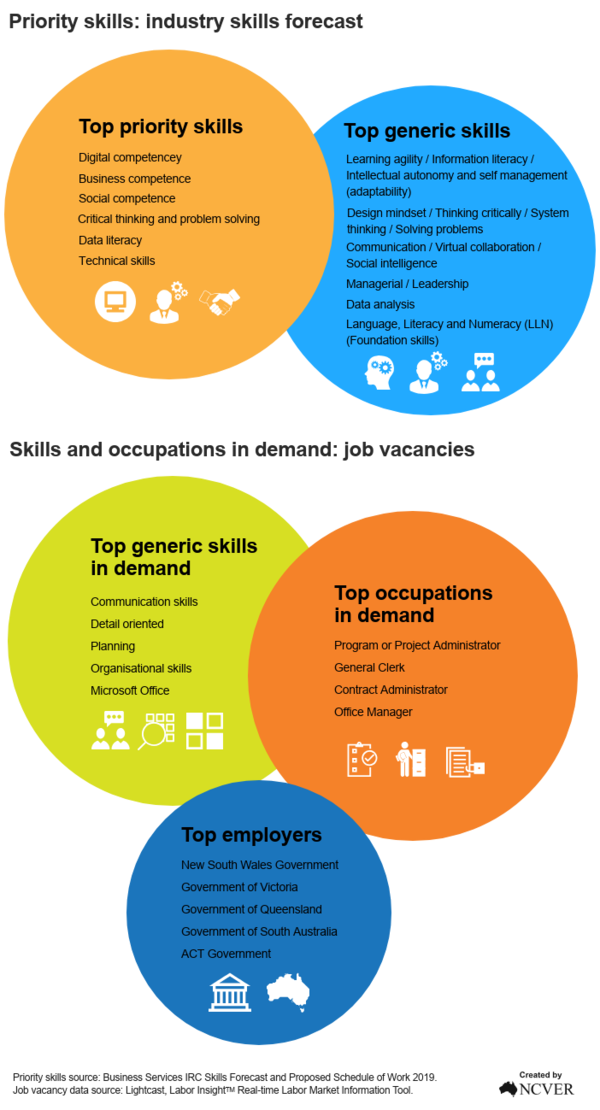Training snapshot
Program enrolments in Business Administration and Governance-related qualifications declined between 2017 and 2018 to around 190,430. After a slight increase in 2019, enrolments fell further in 2020 to 178,420 and have remained constant in 2021 with 178,590 enrolments. Program completions have fallen over the same period from 69,350 in 2017 to 57,090 in 2021.
Enrolments in Business Administration and Governance-related qualifications are spread across a wide range of qualification levels. Although most enrolments in 2021 were at the certificate III level (around 78,820), there were also 35,550 at the diploma or higher level, followed by 30,580 at the certificate II level and 29,210 at the certificate IV levels. Most of the program enrolments in Business Administration and Governance were in the areas of general business or business administration, with the most common intended occupation being General Clerk.
In 2021, approximately two-thirds (67%) of all training in this sector was delivered by private training providers, though the most common training provider varied by enrolment area. The majority of enrolments at TAFE institutes were in the areas of business governance and international business, while the majority of enrolments at private training providers were in the areas of business sales, and general business. Overall, 48% of subjects in Business Administration and Governance-related qualifications were Commonwealth and state funded, with domestic fee-for service accounting for a further 36%. Queensland had the highest proportion (26%) of students that enrolled in this sector in 2021, followed by New South Wales (24%) and overseas (17%).
Almost a third (31%) of training was delivered in New South Wales, followed by Queensland (29%) and Victoria (19%).
Both commencements and completions for apprenticeships and traineeships in this sector declined between 2012 and 2015, with commencements beginning to rise between 2015 and 2017. In 2019 there was a slight increase in both commencements and completions, with commencements rising again in 2020 to 12,550. In 2021 both commencements and completions levels increased significantly, up to approximately 20,380 and 6,520 respectively.
The most common intended occupation for apprentices and trainees in this sector was General Clerk. Queensland (39%) and New South Wales (24%) reported the highest proportions of apprentices and trainees in 2021 for Business Administration and Governance-related qualifications.
For more data specific to your occupation, industry group or training package, visit NCVER’s Data Builder.
For more data specific to your region visit NCVER’s Atlas of Total VET.
If you are interested in extracting NCVER data to construct tables with data relevant to you, sign up for a VOCSTATS account.

